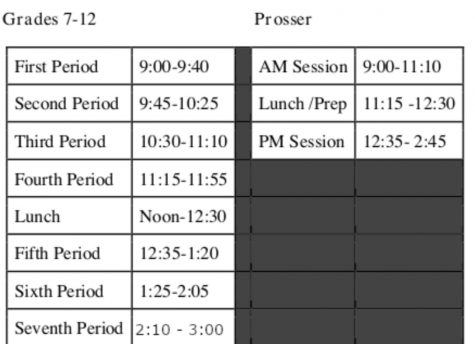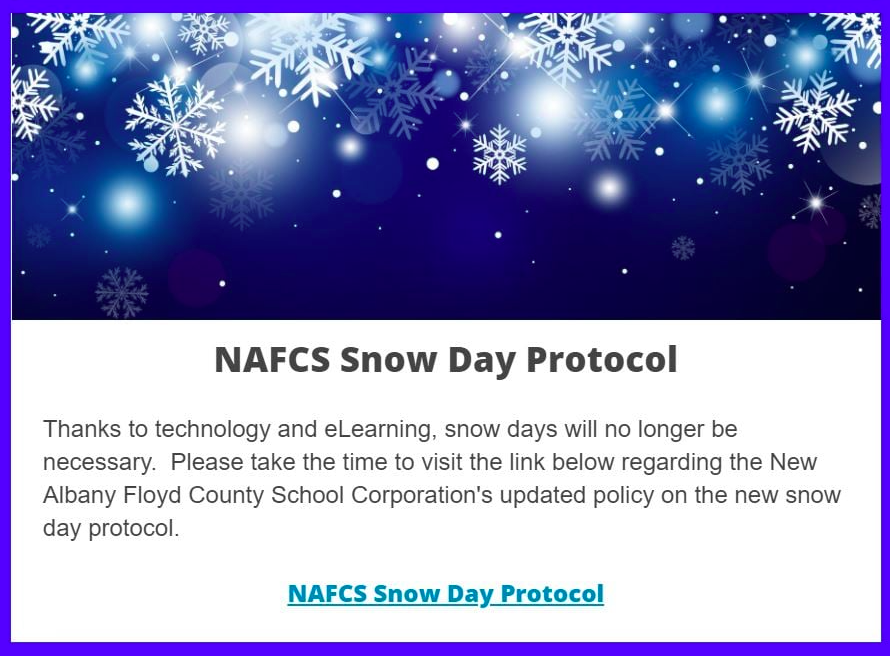District says goodbye to traditional “snow days”
COVID-19 virtual learning offers asynchronous opportunity for snow days
March 7, 2021
In years past, a significant snowfall would lead to students being out of school for days, and require those missed days to be made up. This year, asynchronous learning has replaced the day off and the make up days.
“Historically, ‘snow days’ have been perceived by many as a joyful reprieve from the normal day to day grind for students and staff,” superintendent Dr. Brad Snyder said. “We wanted to preserve as much of that vibe as possible. For high school students, we didn’t want the day to start at 7:40 am and we also wanted everyone to have as much flexibility as possible but yet still receive a day of quality instruction.”
In the case of a snow day, students are marked as present by default, instructed to join the first period Google Meet at 9:00, and assigned a maximum of 30 minutes of work from each of their seven teachers. These assignments are supposed to be able to be completed asynchronously, but if a student has questions, they are able to join a Google Meet at an allotted time, based on a “bell” schedule to talk to their teacher. Three school days after the snow day, teachers verify attendance based on whether or not the student has completed the work assigned on the snow day – if so, the student’s atttendance is confirmed “present”, if not, the student’s attendance is recorded as “absent, according to the NAFCS Snow Day Policy. 
“My assignments on a snow day have to be shorter than what we would cover on a regular school day because assignments are supposed to fit in 30 minutes,” math teacher Becky Minton said. “The problem with student effort on snow days is that some students wait to do all [of their assignments] once and that defeats the purpose.”
Although Google Meets are going on throughout the day, AP Literature and Composition teacher Debbie Smith says, “very, very few, [students typically join].” Minton said she thinks a different system would work better.
“The most students I ever had on an optional meet was eight,” Minton said. “A lot of times I sat there by myself for 10-15 minutes to make sure no one needed to ask me questions. I do think the opportunity to check in is important though, because I did have students with questions occasionally. Maybe office hours would have been a more effective use of our time as teachers. Then everyone with questions would be logged in at the same time.”
The COVID-19 Pandemic pushed the start of the 2020-2021 school year back two weeks and took away half of fall and spring break, including the week of spring break that was previously used for make-up days. If there was more than five snow days, additional instruction days would be tacked on to the end of the year.
“Snow days are not as effective for learning as a regular day,” Dr. Snyder said. “However, an e-Learning day is generally much more effective than a rescheduled snow day. On rescheduled days, we experience low student attendance and low engagement. The feedback regarding e-Learning attendance, assignment, and overall student engagement has been positive.”
Minton, who teaches Advanced Placement Calculus A/B and B/C considers this the right call.
“The College Board doesn’t care if we have snow days,” Minton said. “The AP test does not get pushed back. So, in the old world of snow days, losing eight days would give me a total anxiety attack! The way we did snow days this year makes me less stressed about our pacing, as long as students keep up with the work on a daily basis.”
With the changes to how a snow day is handled, the thought behind whether or not to call one has remained the same, despite there being less overall schedule changes.
“The decision making process remains the same,” Snyder said. “We watch predictions, consult with the NWS, and then most importantly our teams drive our roads and report back with their opinions and observations. Then, we have many conversations and debates with key parties. This process has not changed. It is not any easier or any harder.”


